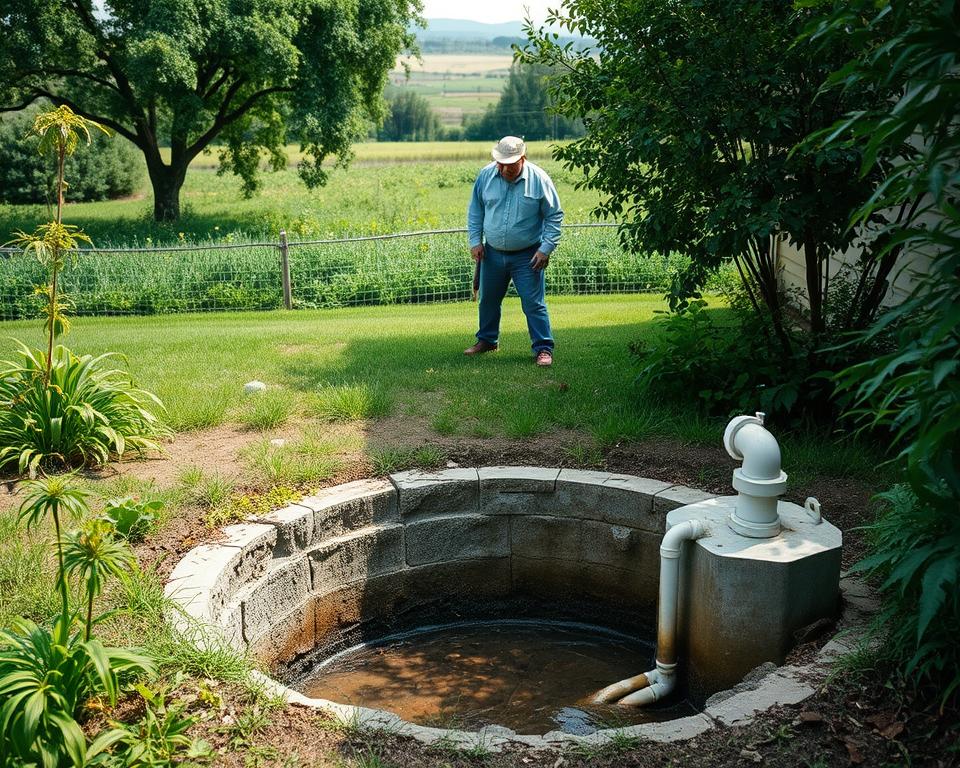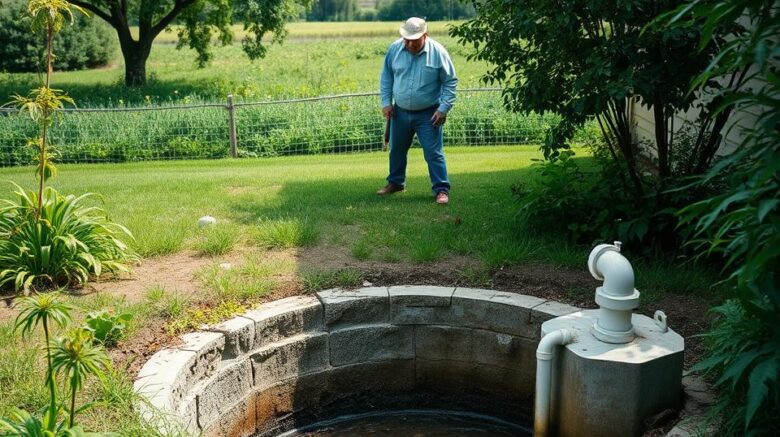Recreational Vehicle Sewage Pump Handbook: Essential Tips for Maintenance
Did you ever ponder the operation of your recreational vehicle sewage network? Grasping the nuts and bolts of your RV waste pump can prevent mishaps, uplifting your camping trips. It focuses on handling waste productively and warding off noxious odors. In this handbook, you’ll discover vital maintenance methods for RV black water tank pump. Each created to sustain your sewer network’s best operation.
Understanding Your RV Sewer Pump System
The camper sewage pumping setup is vital for refuse disposal, making camping more convenient. It features two main tanks: the black water tank for solid waste and the grey water tank for water from wash stations. Differentiating these tanks is key to ward off clogs and keep your RV functioning efficiently.
An camper macerator unit is a popular choice for refuse disposal. It grinds solid waste into tiny bits, easing disposal. As another option, a classic RV pump is available. It effectively moves waste without grinding, for those wanting a simpler option.
Understanding your RV’s sewer pump system is crucial to stopping problems and ensuring clean inspections. Using the system efficiently can prevent messes, uplifting your outdoor adventures.
Why Consistent Upkeep Matters
Maintaining your RV sewage disposal pump is vital for a smooth travel experience. Without proper upkeep, you may run into odors, clogs, or backups. These problems can mar your road trips.
Regular maintenance thwart such complications and extend your system’s life. By examining hoses and seals, you improve efficiency. A well-serviced RV sewage pump ensures effective refuse removal, letting you enjoy uninterrupted travels.
Consistent attention also brings financial savings over time. Lack of care can cause significant problems, requiring cost-intensive maintenance. Committing to regular maintenance keeps your motorhome in top condition, saving money long term.
Recommended Frequency for RV Septic Tank Pumping
Knowing the right time to pump your RV Septic Tank is essential for its upkeep. It’s advised to pump every 3–5 days during use. For weekend journeys, post-trip emptying may suffice.
Frequency depends on multiple considerations. Tank size and occupancy are key. Preferably pump when it reaches two thirds. This helps ensure steady waste movement and prevent obstructions.
Checking your RV Septic tank levels is crucial for a stress-free outing. Oversee properly your camper’s waste to ward off issues while traveling.

Best Practices for Emptying Your Tanks
Properly emptying RV tanks is key for your motorhome’s sanitary condition and reliability. Begin with the black tank to let the grey water rinse leftover solids. This approach avoids clogs and ensures seamless flow.
Choose a top-grade drain hose for disposal. A sturdy hose prevents leaks and locks connections. Attach a tank rinser for a deep clean, using water pressure to remove remaining debris, improving cleanliness.
Comprehensive emptying prevents residue buildup, avoiding foul odors and potential issues. To maintain an well-functioning sewage system in your motorhome, adhere to these guidelines:
- Consistently apply a tank additive post-drain to control odors and decompose waste.
- Watch capacity to avoid spills.
- Inspect your RV waste pump regularly for clogs and wear.
- Deep rinse tanks each month or twice monthly, even during less frequent trips.
Adopting these techniques enhances your sewage system’s resilience and efficiency, ensuring smooth journeys.
Avoiding Foul Odors and Clogs
For a pleasant camping experience, avoiding stench is vital. Keep enough water in tanks to aid in breaking down waste, stopping unpleasant odors. Also, opting for RV-approved tissue helps prevent clogs, maintaining efficiency.
For improved waste handling in campers, try enzymatic solutions. These effectively break down waste, reducing effort. Regularly inspect the vent pipe to keep air moving freely in the plumbing system.
Cautious flushing is key to avoiding tank issues. Avoid flushing wipes, feminine products, and paper towels. These non-biodegradable items can cause major clogs. Following these tips helps maintain a more sanitary camping environment.
RV Waste Pump Service Tips
Maintaining your RV’s sewer pump system is key for seamless adventures. Verify seal condition frequently to prevent leaks. Faulty seals can cause unexpected spills, harming your RV.
To eradicate odors and maintain cleanliness, sanitizing is essential. Carry out intensive cleans quarterly to prevent buildup, ensuring the system performs reliably. These steps are necessary for maintaining a mobile macerator, promoting longevity and efficient operation.
Oiling valve mechanisms is another vital task. It helps stop leaks and enhance functionality. Monitoring tank sensors is critical for precise measurements, preventing run-ons and unexpected pump issues. Regularly reviewing these points makes your RV adventures neater and more enjoyable.
Indicators You Need Expert Pumping
Identifying septic problems ahead can save you from bigger headaches. A tell-tale indicator you need a pro pump service is delayed emptying. When sinks and toilets take longer to clear, it often points to obstructions. It suggests your system may be full.
Lingering smells are another obvious clue of sewage troubles. Stench that won’t go away despite cleaning suggest trapped waste. It’s crucial to check the transparent elbow fitting when dumping waste. Visible residue signals it’s time for expert emptying.
Technicians employ water-jet systems to break up hard obstructions efficiently. Ignoring these warnings can grow into major problems. Therefore, it’s essential to seek help immediately when issues arise.
| Warning Signs of Waste Problems | Suggested Steps |
|---|---|
| Delayed Drainage | Check obstructions; call expert service |
| Persistent Odors | Check vents; contact pro service |
| Visible Waste Residue | Call pro for deep cleanse |
Selecting the Ideal RV Waste Grinder
When picking an RV macerator pump, assess its volume handling, durability, and compatibility with your RV’s size. A reliable macerator is vital for effective waste grinding. This is especially crucial for RVs requiring frequent disposals. High-end pumps improve sewage handling, ensuring a more pleasant journey.
A range of options cater to diverse needs. For an informed decision, focus on these critical elements:
- Capacity: Verify capacity matches your usage.
- Durability: Opt for models built to endure travel demands.
- Ease of Use: Select pumps with intuitive controls.
- Compatibility: Verify the pump fits your RV plumbing.
Investing time in research when choosing an RV macerator pump enhances travel enjoyment and ensures efficient pump performance.
RV Sewer Pump Problem-Solving
Accurate diagnosis for your RV sewer pump is vital in fixing common sewage issues before they worsen. If you notice sluggish emptying, unexpected backups, or persistent odors, act quickly. These are clear signs of malfunction requiring attention.
Begin by examining the pump, its connections, and hoses. Search for any clogs that could slow flow. Ensure inlet and outlet fittings are secure. Also, verify the pump’s power supply for consistency.
If basic checks don’t uncover the issue, listen to the pump’s sound. A unit that’s too loud or too quiet may have internal damage. Also, inspect for leaks, as these can compound sewage problems. With these troubleshooting steps, many RV owners identify and fix issues early, avoiding costly repairs.
Extended RV Pump Upkeep
For extended service life, commit to regular sewer pump upkeep. Flush the system consistently to prevent clogs. Set up and follow a maintenance routine, keeping everyone informed of their roles. This markedly increases your waste system’s lifespan.
Educating yourself and others on correct flushing habits is vital. This avoidss issues and fosters shared responsibility. The result benefits both users and the sewer system.
- Regularly check hoses and fittings
- Maintain clear filter screens
- Book expert service once a year
- Using appropriate tank treatment chemicals
Following these guidelines improves your camper’s sewage system’s durability and keeps it effective, making travels more enjoyable.
To Summarize
Caring for your RV sewer system diligently is key for seamless camping adventures. Regular attention to RV sewer system maintenance markedly cuts problem risks, letting you focus in the journey. By understanding your system and applying reliable sewage methods, your trips will be free of waste management woes.
Applying the vital tips from this guide promotes RV waste management and uplifts your travel comfort and safety. Ensure pump reliability by following best upkeep practices and tackling potential issues promptly.
Keeping informed about your RV sewer system is rewarding. It secures homely comforts while exploring. Wishing you joyous and relaxed journeys!
FAQ
How can I tell it’s time to empty my RV Septic tank?
Pump the RV Septic tank when it hits 66% capacity.
How do black and grey tanks differ?
Black tank is for sewage waste. Meanwhile, the grey tank collects water from basins and showers.
What is the recommended maintenance schedule for RV sewer pumps?
Perform maintenance every few months.
Which products are best for RV sewer pump care?
Use enzyme-based treatments safe for RVs.
How do I avoid clogs in my RV sewer system?
Maintain sufficient water level and avoid wipes and paper towels.
When should I call a pro for RV pump service?
Persistent smells or gurgling indicate pro help.
Tips to optimize camper macerator performance?
Choose a robust model and follow manufacturer guidelines.
Deep cleaning checklist for RV sewer system?
Flush lines, replace seals, and sanitize components.
What long-term care tips help my RV sewer pump?
Train users on proper disposal.
Septic pumping frequency for heavy RV use?
Empty every three to five days.
